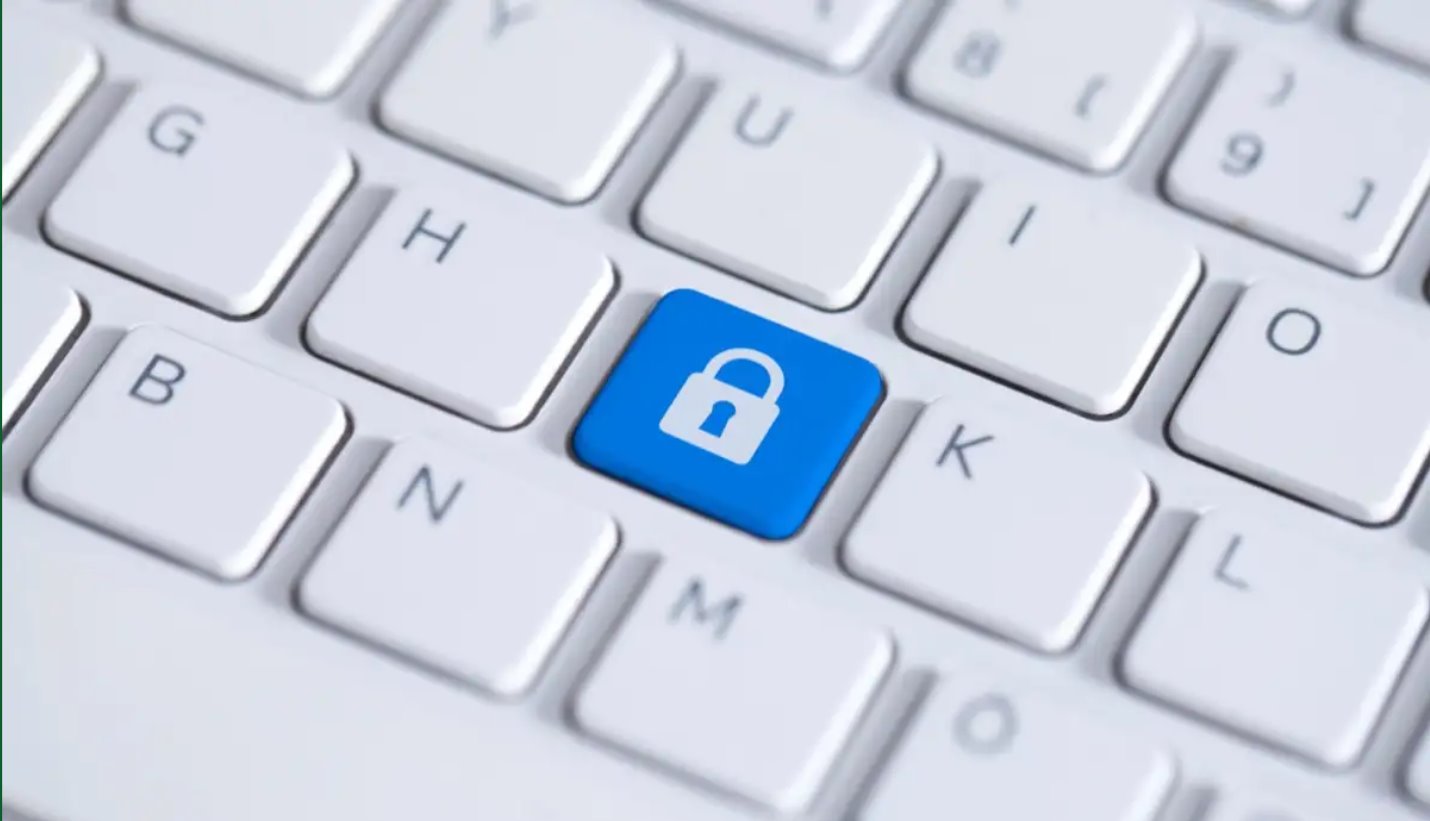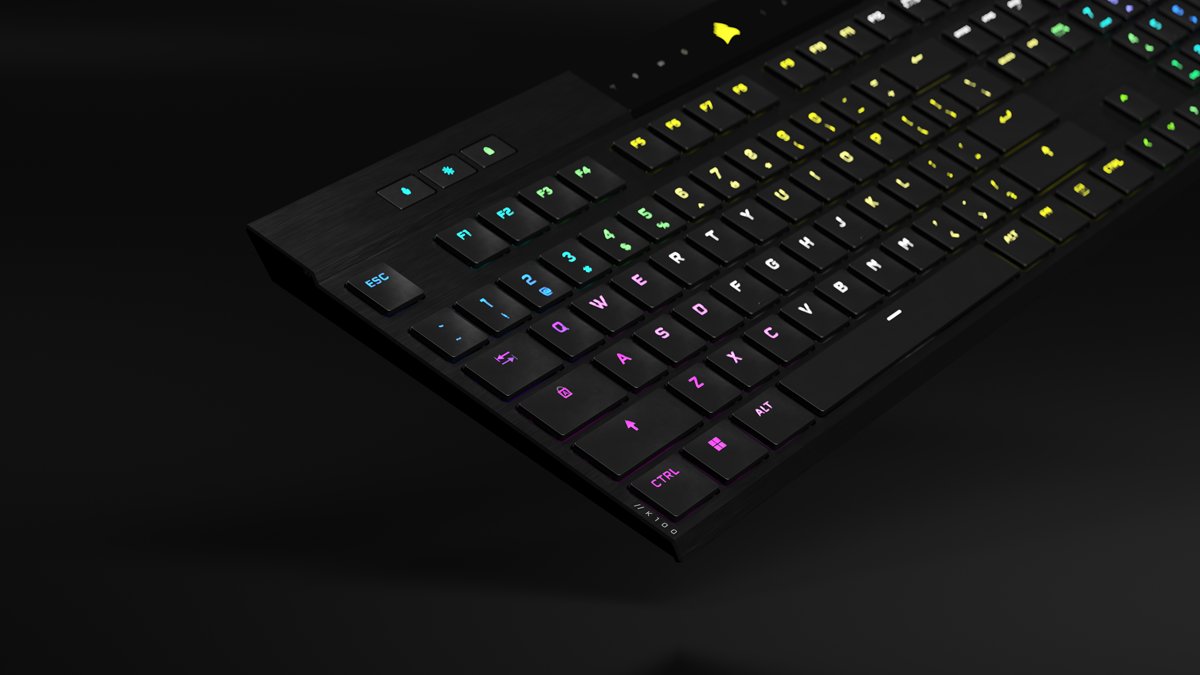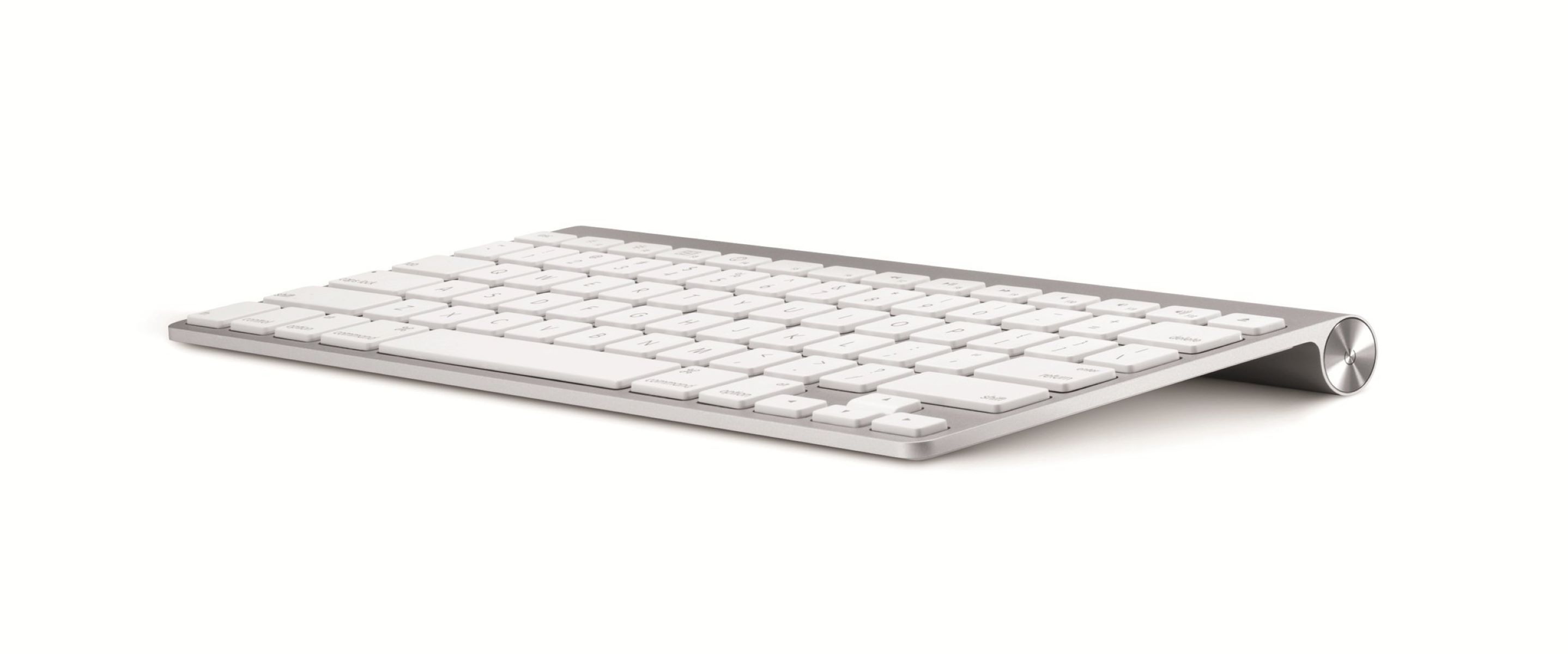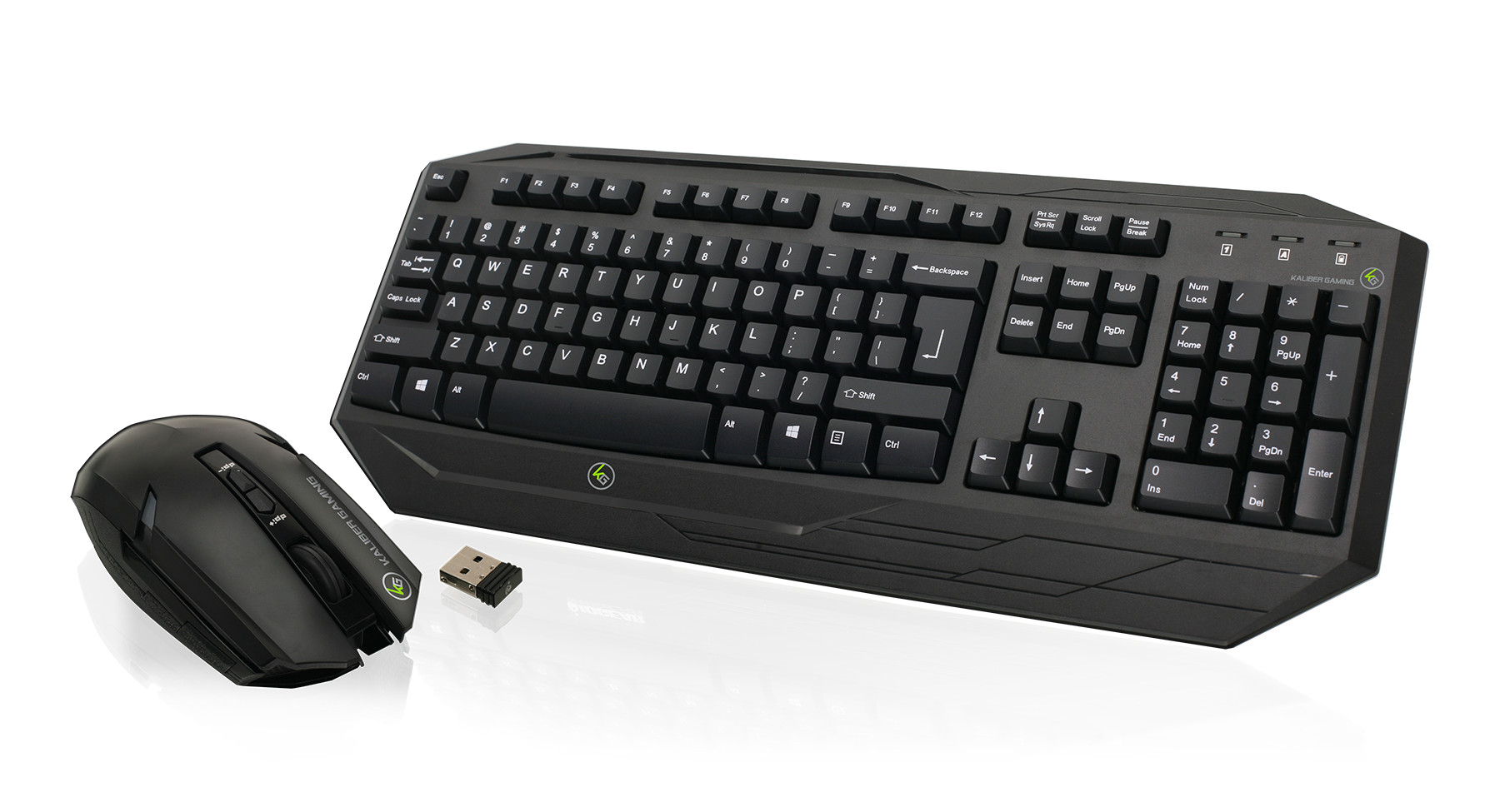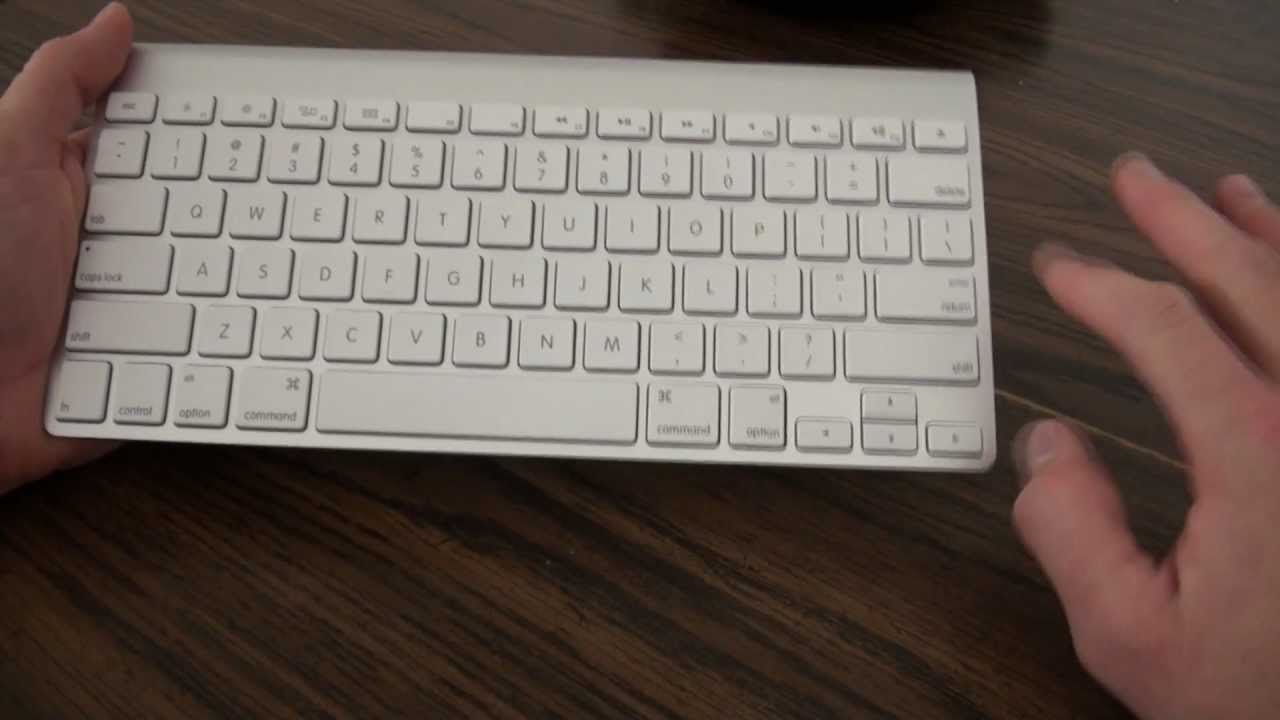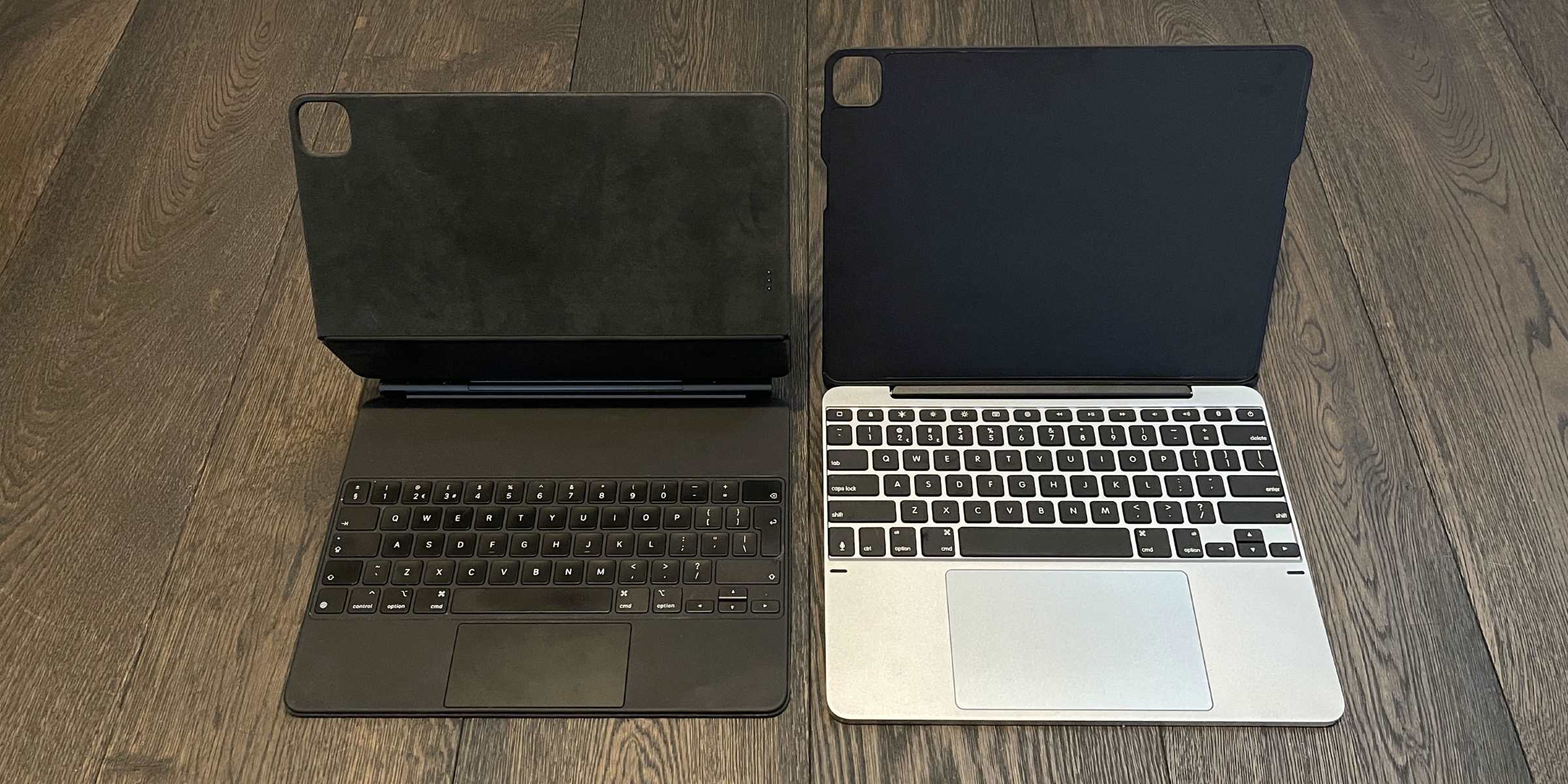Introduction
A wireless keyboard is a device that allows you to input commands into a computer or other electronic devices without the need for a physical connection. It uses wireless technology, such as Bluetooth or radio frequency, to transmit the keystrokes to the receiving device. Wireless keyboards offer flexibility and convenience as they can be used from a distance and eliminate the hassle of tangled cords.
However, there may be instances where you may need to unlock a wireless keyboard. This could be due to various reasons, such as the keyboard not responding, being in an incorrect mode or locked state, or experiencing connectivity issues. Whatever the cause may be, unlocking a wireless keyboard is typically a straightforward process that can be done using a few simple methods.
In this article, we will explore different methods to unlock a wireless keyboard. Whether you have a Bluetooth keyboard, a wireless USB keyboard, or a keyboard that connects via a dongle, these methods will help you troubleshoot and regain control of your keyboard.
So, if you’re ready to learn how to unlock your wireless keyboard, let’s dive into the different methods you can try.
What is a Wireless Keyboard?
A wireless keyboard is a type of computer keyboard that does not require a physical wired connection to the computer or device it is being used with. Instead, it uses wireless technology to transmit keystrokes to the receiver, which then interprets and inputs the commands into the computer.
Wireless keyboards typically use either Bluetooth or radio frequency (RF) technology for transmission. Bluetooth wireless keyboards are designed to be compatible with devices that have built-in Bluetooth capabilities, such as laptops, tablets, and smartphones. They establish a direct connection with the device, allowing for seamless and convenient typing.
On the other hand, RF wireless keyboards use a USB receiver, often referred to as a dongle, to establish a connection with the computer or device. The receiver plugs into a USB port and communicates with the keyboard wirelessly using radio waves. RF wireless keyboards offer a relatively longer range compared to Bluetooth keyboards.
Wireless keyboards provide several advantages over traditional wired keyboards. First, they offer greater flexibility and freedom of movement. You can comfortably control your computer or device from a distance without being restricted by cords. This is especially useful in situations where you want to control a media center PC from your couch or present slides from across the room.
Another benefit of wireless keyboards is their portability. They are lightweight and compact, making them easy to carry around and use with multiple devices. This is particularly convenient for individuals who frequently travel or need to work on different computers.
Moreover, wireless keyboards often come with additional features and functionalities, such as multimedia keys, backlighting, and programmable hotkeys. These features enhance productivity and user experience, allowing for quick access to commonly used commands and shortcuts.
However, it’s important to note that wireless keyboards require batteries or rechargeable power sources to operate. Without power, the keyboard will not function. Therefore, it’s recommended to keep spare batteries or regularly charge your wireless keyboard to ensure uninterrupted usage.
In summary, a wireless keyboard is a cordless input device that offers flexibility, portability, and additional features. Whether you opt for a Bluetooth or RF wireless keyboard, they provide a convenient and efficient way to interact with your computer or device without the constraints of wires.
Why Would You Need to Unlock a Wireless Keyboard?
There are several situations where you might need to unlock a wireless keyboard. Understanding these scenarios will help you troubleshoot and resolve any issues you may encounter. Here are some common reasons why you might need to unlock your wireless keyboard:
- Keyboard not responding: Sometimes, a wireless keyboard may stop responding or fail to input commands. This can happen due to various reasons, such as a low battery, connectivity issues, or software conflicts. Unlocking the keyboard can help resolve these issues and restore functionality.
- Incorrect mode or locked state: Certain wireless keyboards have different operating modes or locked states. For example, multimedia keyboards may have a gaming or presentation mode that disables certain keys to prevent accidental keystrokes. If your wireless keyboard is not working as expected, it may be locked in a specific mode, and unlocking it can restore normal functionality.
- Connectivity issues: Wireless keyboards rely on a stable connection between the keyboard and the receiver (either Bluetooth or USB dongle). However, interference from other devices, low battery levels, or outdated drivers can disrupt the connection. Unlocking the keyboard and re-establishing the connection can help resolve these connectivity issues.
- Driver or software updates: Updating your computer’s operating system, drivers, or keyboard software can sometimes cause compatibility issues with your wireless keyboard. Unlocking and re-pairing the keyboard after the update can ensure proper functionality.
It’s important to note that the specific steps to unlock a wireless keyboard will vary depending on the make and model. Therefore, it’s recommended to refer to the user manual or manufacturer’s website for detailed instructions specific to your keyboard.
In the next sections, we will explore different methods to unlock a wireless keyboard. These methods are general troubleshooting steps that can be applied to most wireless keyboards. Whether you have a Bluetooth keyboard or an RF wireless keyboard, these methods will help you resolve common issues and regain control of your keyboard.
Method 1: Check the Battery
One of the first troubleshooting steps in unlocking a wireless keyboard is to check the battery. A low or dead battery can cause the keyboard to stop functioning or become unresponsive. Here’s how you can check the battery and, if necessary, replace it:
- Check the battery indicator: Most wireless keyboards have a battery indicator light that shows the remaining battery level. Look for this indicator, usually located on the keyboard itself or on the receiver for RF keyboards. If the battery level is low or the indicator is not lit, it’s time to replace the battery.
- Replace the batteries: For keyboards that use replaceable batteries, follow these steps to replace them:
- Turn off the keyboard.
- Locate the battery compartment, usually on the back of the keyboard.
- Open the battery compartment and remove the old batteries.
- Insert new batteries, making sure to align them correctly according to the polarity markings.
- Close the battery compartment.
- Turn on the keyboard and check if it’s working properly.
- Charge the keyboard: If your wireless keyboard has a built-in rechargeable battery, connect it to a power source using the provided charging cable. Follow the manufacturer’s instructions for charging times and methods. Once fully charged, disconnect the cable and check if the keyboard is functioning correctly.
By checking and replacing the battery, you can ensure that power is not the cause of any issues with your wireless keyboard. If the keyboard still doesn’t respond or function properly after replacing or charging the battery, proceed to the next method for further troubleshooting.
Method 2: Pairing Process
If your wireless keyboard is not working or is not connecting to your device, one possible solution is to go through the pairing process. Pairing allows the keyboard to establish a secure connection with your computer or device. Here’s how you can pair your wireless keyboard:
- Place the keyboard in pairing mode: Depending on your keyboard model, there may be a switch, button, or key combination (often involving the Fn key) to put the keyboard in pairing mode. Refer to the user manual or manufacturer’s website for specific instructions on how to activate pairing mode.
- Enable Bluetooth: If you have a Bluetooth wireless keyboard, make sure that Bluetooth is enabled on your computer or device. Go to the Bluetooth settings and turn on Bluetooth if it’s not already enabled. Also, ensure that your device is discoverable and not connected to any other Bluetooth devices.
- Pair the keyboard: Once the keyboard is in pairing mode and Bluetooth is enabled on your device, it’s time to initiate the pairing process. On your computer or device, search for available Bluetooth devices. Select the listed keyboard or the corresponding Bluetooth identifier and click on the “Pair” or “Connect” button. Follow any on-screen prompts to complete the pairing process.
- Enter pairing code: In some cases, you may be prompted to enter a pairing code or PIN on your device or keyboard. This code is usually a sequence of numbers or a unique code provided by the manufacturer. Enter the code using your computer or device’s keyboard and press Enter or OK to confirm.
- Test the connection: Once the pairing process is complete, test the connection by typing on the keyboard. Ensure that the keystrokes are being registered by your computer or device. If the keyboard is now functioning correctly, you have successfully paired the keyboard.
The pairing process may slightly differ depending on the wireless keyboard model and the specific device you are using. It’s essential to follow the instructions provided by the manufacturer for your specific keyboard model to ensure a successful pairing.
If the keyboard still doesn’t connect or work after going through the pairing process, try the next method to further troubleshoot the issue.
Method 3: Resetting the Keyboard
If your wireless keyboard is still not functioning correctly after checking the battery and pairing it with your device, you may need to reset the keyboard. Resetting the keyboard can help resolve any software conflicts or configuration issues that may be causing the problem. Here’s how you can reset your wireless keyboard:
- Turn off the keyboard: If the keyboard is currently turned on, switch it off using the power switch or the designated power button. This will ensure a complete reset of the device.
- Disconnect the wireless connection: For Bluetooth keyboards, go to your computer or device’s Bluetooth settings and disconnect the keyboard from the paired devices list. Remove the keyboard from the list to sever the existing connection.
- Remove batteries or disconnect power: If your wireless keyboard uses replaceable batteries, remove them from the battery compartment. For keyboards with built-in rechargeable batteries, disconnect the power source by unplugging the charging cable, if applicable.
- Wait for a few seconds: Leave the keyboard without power for about 10 to 15 seconds. This will allow any residual power to dissipate and ensure a complete reset.
- Reinsert batteries or reconnect power: If you removed the batteries, insert them back into the keyboard following the correct polarity. For keyboards with built-in rechargeable batteries, plug in the charging cable to restore power.
- Turn on the keyboard: Switch on the keyboard using the power switch or button. The keyboard should now be in a reset state, ready to be paired or connected to your computer or device.
Once the keyboard has been reset, you can proceed to pair it again with your computer or device using the appropriate method discussed earlier. This will establish a fresh connection and potentially resolve any issues that were present before the reset.
If resetting the keyboard does not solve the problem, there may be other factors or hardware issues causing the malfunction. In such cases, it is recommended to contact the manufacturer’s support or consult a professional for further assistance.
Method 4: Updating Drivers
If your wireless keyboard is still not working properly after trying the previous methods, updating the keyboard drivers may help resolve the issue. Outdated or incompatible drivers can cause communication problems between the keyboard and your computer or device. Here’s how you can update the drivers for your wireless keyboard:
- Identify the keyboard model: Determine the make and model of your wireless keyboard. This information is usually printed on the keyboard itself or provided in the user manual.
- Visit the manufacturer’s website: Go to the website of the keyboard’s manufacturer and navigate to the support or drivers section. Look for the specific drivers for your keyboard model.
- Download the latest drivers: Check if there are any updated drivers available for your keyboard. Download the latest driver package compatible with your operating system.
- Install the drivers: Once the driver package is downloaded, run the installer and follow the on-screen instructions to install the updated drivers for your wireless keyboard. Make sure to reboot your computer after the installation, if prompted to do so.
- Reconnect the keyboard: After updating the drivers, reconnect your wireless keyboard to your computer or device using the appropriate method discussed earlier. This will establish a fresh connection with the updated drivers, potentially resolving any compatibility issues.
- Test the keyboard: Test the keyboard to ensure that it is now functioning correctly. Try typing and using various keys to verify that the updated drivers have resolved any previous problems.
Updating the drivers for your wireless keyboard is an important step in troubleshooting any software-related issues. It ensures that your keyboard is using the latest compatibility enhancements and bug fixes provided by the manufacturer.
If updating the drivers does not solve the problem or if there are no available updates, there may be hardware-related issues with your keyboard. In such cases, you may need to contact the manufacturer’s support or seek professional assistance for further troubleshooting or repair.
Conclusion
Unlocking a wireless keyboard may be necessary when it stops responding, is in an incorrect mode, or experiences connectivity issues. Whether you’re dealing with a Bluetooth keyboard or an RF wireless keyboard, there are several methods you can try to unlock and restore functionality to your keyboard.
In this article, we explored four common methods for unlocking a wireless keyboard:
- Checking the battery to ensure it has sufficient power.
- Going through the pairing process to establish a connection with your computer or device.
- Resetting the keyboard to resolve any software conflicts or configuration issues.
- Updating the keyboard drivers to ensure compatibility with your operating system.
By following these troubleshooting steps, you can often resolve issues with your wireless keyboard and regain control over your typing experience.
Remember, the specific steps and instructions may vary depending on the make and model of your keyboard, so it’s always a good idea to consult the user manual or visit the manufacturer’s website for accurate information tailored to your keyboard.
If you’ve exhausted these troubleshooting methods and your wireless keyboard still doesn’t work properly, it may be necessary to contact the manufacturer’s support or seek professional assistance for further troubleshooting or repair.
With the knowledge gained from this article, you can now confidently troubleshoot and unlock your wireless keyboard, ensuring smooth and uninterrupted typing for your computing needs.







